| Entries |
| A |
|
Agriculture
|
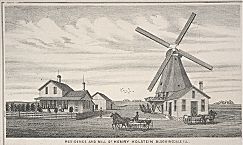
|
The years between the first schooner-load of grain to leave Chicago in 1839 and the 1865 opening of the Union Stock Yard defined Chicago's agricultural heritage. The opening of the Illinois & Michigan Canal, the construction of railroads, Cyrus McCormick's and Obed Hussey's competitive manufacturing of grain reapers and other implements, the beginning of the Chicago Board of Trade, and the extremely favorable growing seasons of 1849, 1850, and 1851 all combined to strengthen Chicago's importance to the agricultural business community.
Likewise, developments after the American Civil War maintained Chicago's role as the leading agricultural city. Development of the refrigerated railroad boxcar, dredging and expansion of the city's harbor, and the establishment of the corn and livestock belt expanded the agricultural prosperity and reputation of the city.
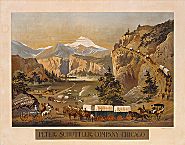
|
Grain farmers benefited from the ever-expanding transportation system for getting their crop to market. Oxen-pulled carts on crude roads were replaced by horse-drawn wagons on the plank roads of the 1830s. These in turn became obsolete with the opening of the I&M Canal in 1848 and the subsequent railroad construction westward from Chicago in the 1850s. What had been a difficult journey of three or four days to transport a wagon full of grain from the Fox River 35 miles west of Chicago was now a several-hour trip by train to the city.
This mass movement of grain resulted in the commingling of grain at railroad stops and barge tie-ups called elevators. There, a farmer's grain was carefully weighed and graded, with like grades being elevated into large commingled overhead bins. From these bins, gravity provided the impetus and wooden chutes quickly filled the waiting railroad cars and barges. While the elevator created another middleman between the farmer and the purchaser, it facilitated a more reliable delivery system, provided a means to accommodate a larger harvest, minimized the loss of grain to a single seller, and provided for the speculator, who could easily buy or sell the stored grain.
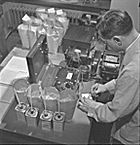
|
The Chicago Board of Trade provided similar support for the growing beef cattle and hog industry of the mid-1800s. As the railroad link between the eastern markets and the increasing number of Midwestern and trans-Mississippi producers of livestock, the Union Stock Yard became the largest facility of its kind when it opened in 1865. Just as wheat production had moved westward, so had the production of hogs, stripping Cincinnati in the early 1860s of its self-proclaimed status as Porkopolis. Following the arrival of Armour, Swift, and other meatpackers, the Union Stock Yard was easily handling eight to nine million animals each year by the mid-1870s.
This post–Civil War commercial growth brought expansion to the city and its population. Feeding this population and supplying transport materials within the city limits was a large agricultural endeavor unto itself. Following the Great Fire of 1871, vegetable and dairy operations moved outside city limits. Vegetable and chicken farms could be found arcing from South Holland to Maywood. Dairy farms developed in DuPage, Cook, and Lake Counties and in the closer-in areas of Will and McHenry Counties. Creameries and milk-processing facilities were constructed along existing railroad lines, and special milk trains transported this commodity for processing. Hay and oats were cash crops for farmers in the outlying counties, as they were vital for feeding and maintaining the tens of thousands of horses used in Chicago each day. The hay market in Chicago was a huge endeavor, with the Union Stock Yard feeding its livestock 100 tons of hay each day during its peak seasons, in addition to the corn that was fed to select holdings.
After the fire, horses remained the only farm animal permitted to stable within the city limits. They provided necessary cartage between warehouses and businesses, made livery services possible, pulled milk and street peddlers' wagons and fire and municipal vehicles, and performed hundreds of other tasks, including functioning as personal transportation. The waste from these horses was in excess of 40,000 pounds each day.
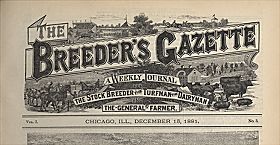
|
The interest in and specialization of the Chicago livestock market continued well into the twentieth century. Agricultural fairs and specific breed expositions, including the numerous agricultural pavilions of the 1893 World's Columbian Exposition, assisted in this promotion. Beginning in 1878, a “fat stock” show was held annually, always in the fall, in order to promote and identify the best examples of purebred species. This evolved into the International Livestock Exposition in 1900 and continued on an annual basis until 1975. J. H. Sanders, founder of the Breeder's Gazette in 1881, and son Alvin worked closely with the various large breeders and individual breeders' associations to create this uniquely large, very successful market and exposition.

|
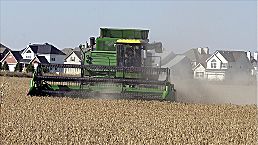
|
The Encyclopedia of Chicago © 2004 The Newberry Library. All Rights Reserved. Portions are copyrighted by other institutions and individuals. Additional information on copyright and permissions.